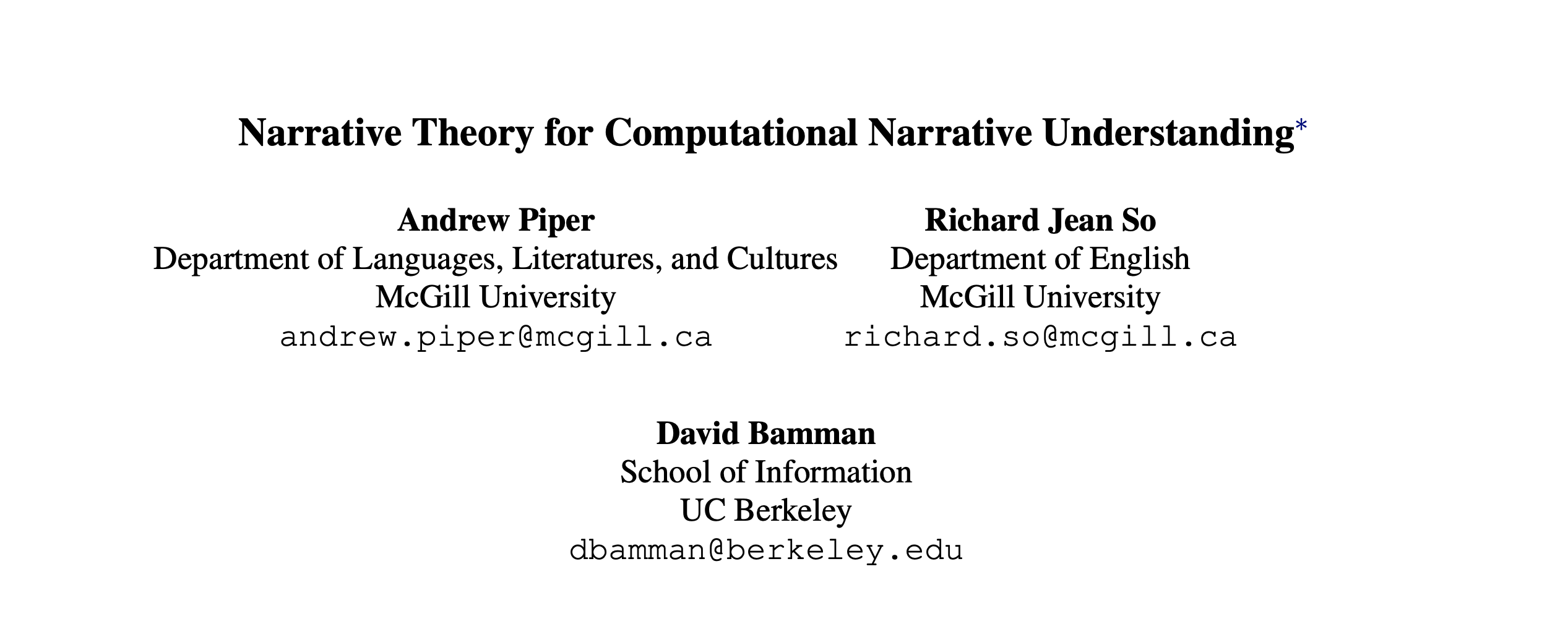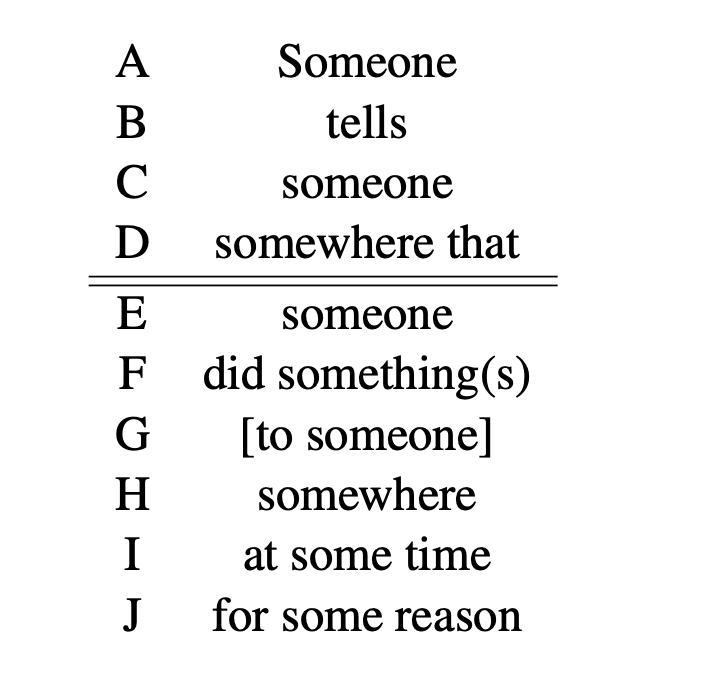Narrative Theory for Computational Narrative Understanding
I have a new piece out with co-authors David Bamman and Richard Jean So in the forthcoming proceedings of the Empirical Methods in Natural Language Processing (EMNLP) conference. Our goal in the paper is to provide NLP researchers with a clear theoretical framework to computationally study narrative and literary researchers an overview of work in NLP that aims to understand the concept of narrative.
The motivation behind the paper was that we were seeing a growth of papers addressing narrative problems in NLP but the theory was either all over the place or non-existent. We’re hoping this kind of article can really showcase the advantages of inter-disciplinary collaboration.
Two of the specific contributions I am most excited about are the minimal narrativity framework we devised along with the big-picture research challenges we pose at the end (Section 3). Going through the narratology literature I was not able to locate consensus on what constitutes a minimal definition of narrative communication. So we developed the following schema:
Thus what defines the presence of narrativity are the eight features: A. teller, B. mode of telling, C. recipient, D. situation, E. agent, F. one or more sequential actions, G. potential object, H. spatial location, I. temporal specification, J. rationale.
The second contribution I’m excited about is our outlining of three big challenge areas for future work. We define these as:
- Narrative Economies
- We define this area as the study of narrative types. While Thompson’s Motif-Index of Folk-literature and the Aarne- Thompson-Uther (ATU) Tale Index are amazing resources, we still lack a system for organizing different narrative archetypes. Many have been proposed, and while I don’t expect one size to fit all, better understanding narrative types will go a long way towards understanding larger cross-cultural or transhistorical economies of narrative circulation. We need a way to think about narrative units that transcend their particular parts (cf. the distinction between emic and etic qualities) to understand what kind of work narrative forms do at different historical junctures.
- Narrative Responses
- An amazing new area for further research is to better understand how readers respond to different narrative qualities or types. We now have massive amounts of reader data thanks to sites like Goodreads or Wattpad. We can begin to move past literary theories that rely on imagined readers and try to better understand what aspects of stories readers are explicitly conditioning on.
- Narrative Beliefs
- This is the one I’m most excited about and is also the hardest. The question here is how we can think of narrative as a world-view or belief system that transcends any given document but is central to guiding people’s actions and statements. Much of how we *understand* the world is structured by narrative features — agents cause things to happen which explains why the world is the way it is. Better understanding these “meta-narratives” (also called “deep-stories” (Rothschild) or “ontological narratives” (Somers)) will be essential for understanding individual and group behavior. There’s a ton of work to do here but the social value is very high.
So that’s it. There are a ton of references in there, so if you want to get started in computational narratology this is a great place to start.


